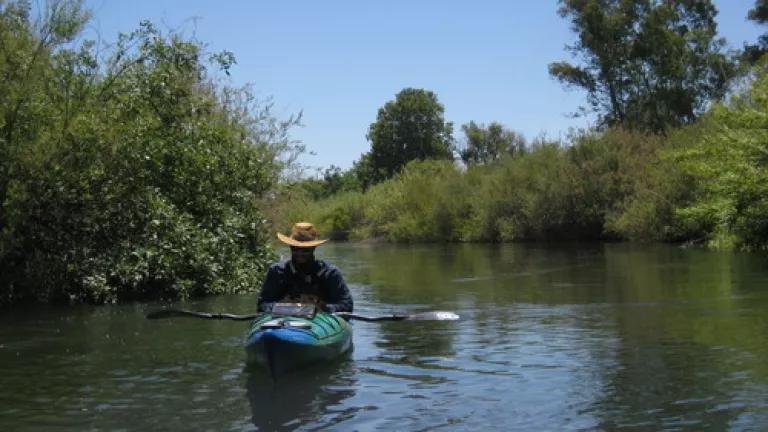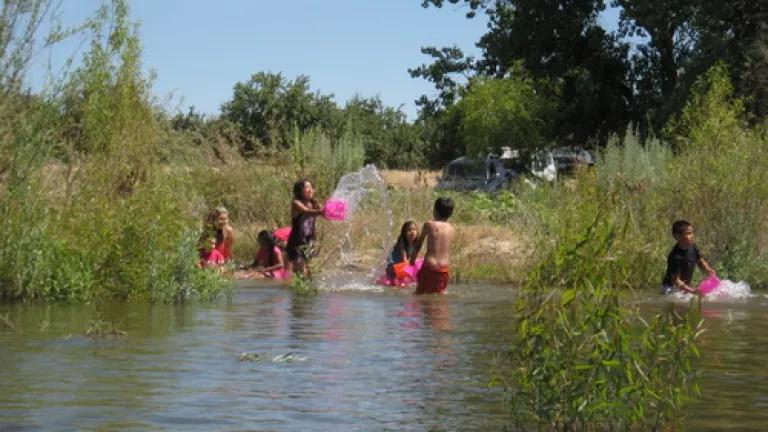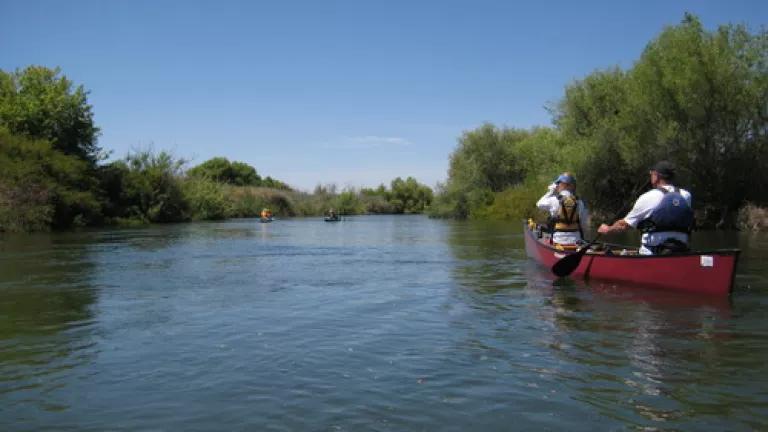
This week I had a chance to travel by kayak down 23 miles of the San Joaquin River just south of Mendota, CA with CNN reporter John Sutter, who is undertaking an ambitious journey to explore the River's entire 360 miles - from high Sierra to the sea.
Since his journey began a week ago, John has traveled many miles in an effort to meet people for whom the River plays an important role and he has reported on his experiences with an impressive stream of Twitter posts. I met up with John for a nine hour paddle down a beautiful stretch of the River and seeing the San Joaquin through his eyes helped me see it in a fresh way. I have worked on the San Joaquin River for 15 years alongside a wide range of stakeholders, yet few meetings have involved actually spending time on the River, seeing firsthand both its beauty and the challenges facing California’s second longest river.
Before I met up with John at Skaggs Bridge Park near Kerman, CA he had already logged an impressive trip to the headwaters of the San Joaquin at Thousand Island Lake, toured Friant Dam, visited the salmon reintroduction fish hatchery, and paddled over thirty miles of river. He even lost a camera when his boat went over in some bushes and had his food raided by a raccoon as he slept beside the river.
Over the course of his travels, John had already seen firsthand many of the challenges facing the River and learned about efforts like the San Joaquin River Restoration Program that are helping to address these issues in the coming years. But what was more captivating than his learning about recent subsidence from overdraft of groundwater or finding that there are very few places where one can access the River was hearing about the people that John has met along the way. He saw a wedding and met the father of the bride who chose to get married on the river’s bank. He witnessed a baptism in the Rivers’ cool waters. He has talked with farm workers that are struggling to make ends meet as well as farmers who are fallowing land and paying painfully high prices for water. He met a raisin grape farmer who grew up along the river during the Great Depression and can tell stories about how, as a young boy, he and his brothers would fish for salmon that would run so thick he thought he could walk across the river on their backs. And then there are people who simply come to the river – from as far away as Tulare (~80 miles) - because the water is “fresh and cold” and just sit and relax in beach chairs under the shade of a cottonwood while their kids splash and play in the water.

Hearing about these people helped me to see a more complete picture of what the River means to families and communities in the Valley. People sometimes mistake the effort to restore the San Joaquin River as being only about fish – it's not. It’s about reviving a living river that can provide so much to the people of the San Joaquin River Valley if we give it a fighting chance to recover from decades of being over-diverted and dried up. Judging by the pictures of the river from the day, I'd say it is already happening. In the near future, with support from local communities, the River will continue to heal using less than 18% of its historic flows leaving the other 82% for the region’s farms and cities. This is not enough water to restore the grand wilderness the river once was, or enough to once again carry people and goods via paddle boats as it once did. The goal is not to go back in time, but to go forward by restoring the basic health of a river that can support ALL of those who make use of it and its precious, life-giving waters. Future generations deserve a living river.

